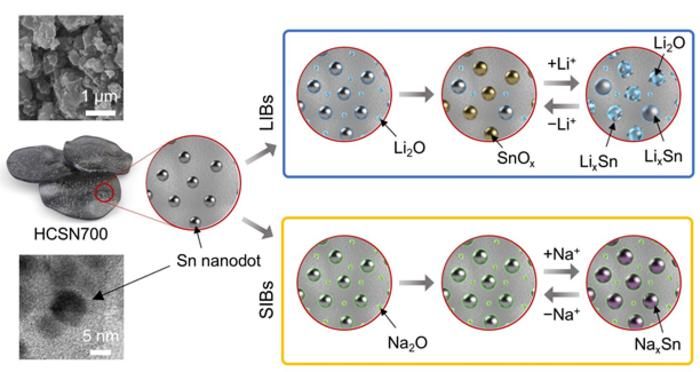Optimized assembly of micro-/meso-/macroporous carbon for Li-S batteries
Advertisement
Li-S batteries are considered as promising alternatives for Li-ion batteries in the new generation of energy storages, due to high specific capacity (1675 mAh/g) and energy density (2600 mWh/g) of sulfur. But the poor conductivity of sulfur and severe shuttle effect of reaction intermediates destory the stability of this system. A variety of porous carbon materials have been applied as sulfur host to improve the performances of Li-S batteries for high conductivity, specific surface area and absorption effect. However, what kind of porous carbon would be the optimal choice to accommodate active material? And Which characteristic of carbon pores should be emphasized? A team of researchers from the School of Materials Science and Engineering and School of Electronic Science and Applied Physics at Hefei University of Technology demostrated that pore size distribution substantially influences the performances of cathode rather than specific surface area and total pore volume. Furthermore, an optimized assembly of micro/meso/macroporous carbon enables cathode present greatly improved electrochemical performances, in which micropore-volume-ratio to the total pore volume dominates cycling stability of batteries, meso/macropore-volume-ratio influences spaces for sulfur loading and channels to ion transfer. This research provides a direction of fabricating porous materials for energy storage.
Based on the traditional S/C cathode, the effects of surface area, total pore volume and pore size distribution of carbon pores on performances of Li-S batteries are compared. In addition, on the premise of identically high sulfur content, the relation of the micro/meso/macropore volume ratio with the capacity, voltage plateau, rate capability, and cycle stability of Li-S battery are investigated. Among the samples, the porous carbon possesses the largest micropore volume ratio of 47.54% while a medium specific surface area of 1217 m2/g and inferior total pore volume of 0.54 cm3/g presents the highest initial discharge specific capacity of 1327 mAh/g and retention of 630 mAh/g over 100 cycles at 0.2C rate along with the best rate capability. The conclusions in this study can be directly applied in material fabrication for other systems of energy storage and even as criterions for further modification of Li-S batteries based on carbon material.
Original publication
Other news from the department science
Most read news
More news from our other portals
See the theme worlds for related content
Topic World Battery Technology
The topic world Battery Technology combines relevant knowledge in a unique way. Here you will find everything about suppliers and their products, webinars, white papers, catalogs and brochures.

Topic World Battery Technology
The topic world Battery Technology combines relevant knowledge in a unique way. Here you will find everything about suppliers and their products, webinars, white papers, catalogs and brochures.






























































